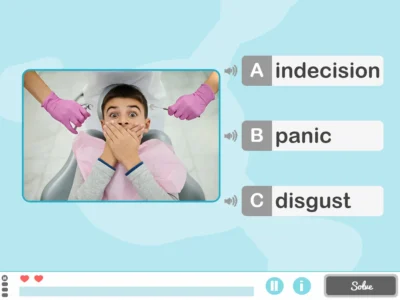Ilse Andrea Carranza Ramírez, psicóloga clínica especializada en ASD, explora how people with ASD experience and process emotions, the difficulties they face and possible interventions to improve these skills.
What is autism spectrum disorder (ASD)
The autism spectrum disorder (ASD) is a neurodevelopmental condition that primarily affects social communication and repetitive behaviors.
However, one of the less understood aspects is emotional processing. People with ASD face significant challenges in identifying, understanding, and regulating their emotions, which impacts their daily life and social relationships.
Emotional processing in ASD
This involves a range of key skills, such as emotion recognition, understanding, expression, and regulation. In people with ASD, these skills are often altered, which contributes to difficulties in social interactions.
For example, research has shown that children with ASD have problems identifying emotions in others, particularly complex emotions such as fear or surprise (Bal et al., 2010). These difficulties may be due to differences in the perception of facial expressions and vocal tones, which are essential elements of emotional communication.
Likewise, emotion recognition is a fundamental skill for social interaction, and refers to the ability to identify emotions in others through nonverbal cues, such as facial expressions and body language. In the case of children with ASD, this skill is often compromised. Research suggests that they tend to focus on irrelevant details of facial expressions instead of the most informative elements, such as the eyes or mouth (Losh & Capps, 2006). This difficulty in correctly interpreting others’ emotions can hinder the formation of social relationships and create misunderstandings in interpersonal communication.
In addition to difficulties recognizing emotions, children with ASD often have problems understanding emotions, both in themselves and in others. Although they experience emotions, it is common for them to have difficulty identifying which emotion they are feeling and why. This can lead to emotional overload, since not understanding their own emotions prevents them from regulating them adequately, which can generate frustration and anxiety (Mazefsky et al., 2013).
To illustrate these concepts with everyday examples, imagine a child with ASD in a common school situation. During recess, a classmate approaches with a surprised expression to show a magic trick. The child with ASD, having difficulty interpreting facial expressions, might not pick up on the surprise on the classmate’s face and, instead, focus on details like a small gesture with the hands. This lack of appropriate emotional response could make the other child feel ignored or misunderstood, thus affecting the development of a potential friendship.
Another everyday example can occur at home, when a parent arrives visibly frustrated after a long day of work. A child with ASD might not recognize the tone of voice or body posture that indicates the adult is upset. Instead of offering comfort or showing empathy, the child might ask an irrelevant question or simply continue with their activity, which could be perceived by the parent as insensitivity or lack of interest.
These difficulties in recognizing and responding to others’ emotions can make social interactions complicated and confusing both for the child with ASD and for those around them.

Subscribe
to our
Newsletter
Emotional regulation in ASD
Emotional regulation is the ability to manage and control emotional responses in diverse situations. In children with ASD, emotional regulation is one of the most challenging areas, since they often experience emotions very intensely but have difficulty expressing them appropriately. The lack of effective strategies to regulate their emotions can lead to challenging behaviors, such as tantrums, emotional outbursts, or avoidance of social situations.
Emotional skills are essential for overall well-being and quality of life, and in the case of children with ASD, these skills tend to be limited. The deficit in emotional understanding does not mean that children with ASD do not feel emotions, but that they have difficulty processing them adequately. As a result, it is common for these children to experience intense emotions but be unable to communicate or manage them effectively (Scarpa et al., 2013).
The fact that children with ASD have difficulty recognizing and understanding others’ emotions directly affects their ability to respond appropriately in social situations. This limits the development of healthy interpersonal relationships and can contribute to feelings of social isolation. Difficulties in understanding others’ emotions can also lead to misunderstandings or inappropriate reactions in social situations.
Interventions to improve emotional processing in ASD
Fortunately, there are effective interventions to improve emotional skills in people with ASD. These interventions focus on strengthening the ability to identify, understand, and express emotions. Some of the most commonly used strategies are:
Modeling and explicit teaching of emotions
An effective technique is explicitly teaching children to identify and name emotions through games or guided activities. This helps them better understand how they feel in certain situations and how they can respond appropriately.
Use of visual supports
Emotion cards or charts that show different emotional states can be useful tools to teach children to recognize emotions in others. These visual supports are particularly effective for children with ASD, as they provide a concrete, visual reference to understand emotional language.
Social stories
This is another useful tool to teach emotional skills to children with ASD. These stories allow them to learn how people feel in specific situations and what an appropriate emotional response would be.
Cognitive-behavioral therapy
Cognitive-behavioral therapy (CBT) and third-wave therapies such as dialectical behavior therapy are widely used with people with ASD to teach them to recognize their emotions and learn strategies to regulate them. This intervention has been shown to be effective in reducing challenging behaviors and improving emotion regulation ability (Scarpa et al., 2013).
Mindfulness
Mindfulness training has been shown to be effective in improving emotional regulation and reducing anxiety in people with ASD. This technique teaches children to become aware of their emotions without judging them, which facilitates better emotional management.
Conclusion
Emotional processing in people with ASD presents significant challenges that can impact their emotional and social well-being. However, with the use of appropriate interventions, such as emotion modeling, visual supports, cognitive-behavioral therapy, and mindfulness, it is possible to significantly improve these skills. Ongoing support from caregivers and educators, along with a structured environment, is key to fostering emotional development and improving the quality of life for people with ASD.
Bibliografía
- American Psychiatric Association. (2013). Diagnostic and Statistical Manual of Mental Disorders (DSM-5). American Psychiatric Publishing.
- Bal, E., Harden, E., Lamb, D., Van Hecke, A. V., Denver, J. W., & Porges, S. W. (2010). Emotion recognition in children with autism spectrum disorders: Relations with eye gaze and autonomic state. Revista de Trastornos del Autismo y del Desarrollo, 40(3), 358-370.
- Losh, M., & Capps, L. (2006). Understanding emotional experience in autism: Perspectives from personal narratives of children with high-functioning autism. Psicología del Desarrollo, 42(5), 809-818.
- Mazefsky, C. A., Herrington, J., Siegel, M., Scarpa, A., Maddox, B. B., Scahill, L., & White, S. W. (2013). The role of emotion regulation in autism spectrum disorder. Revista de la Academia Americana de Psiquiatría Infantil y Adolescente, 52(7), 679-688.
- Scarpa, A., White, S. W., & Attwood, T. (2013). Cognitive-behavioral therapy for individuals with autism spectrum disorder. Guilford Press.
If you enjoyed this blog post about emotional processing in people with autism spectrum disorder (ASD)
“This article has been translated. Link to the original article in Spanish:”
Procesamiento emocional en personas con trastorno del espectro autista (TEA)







 Psychological effects of DANA and other disasters on people with cognitive impairment
Psychological effects of DANA and other disasters on people with cognitive impairment
Leave a Reply